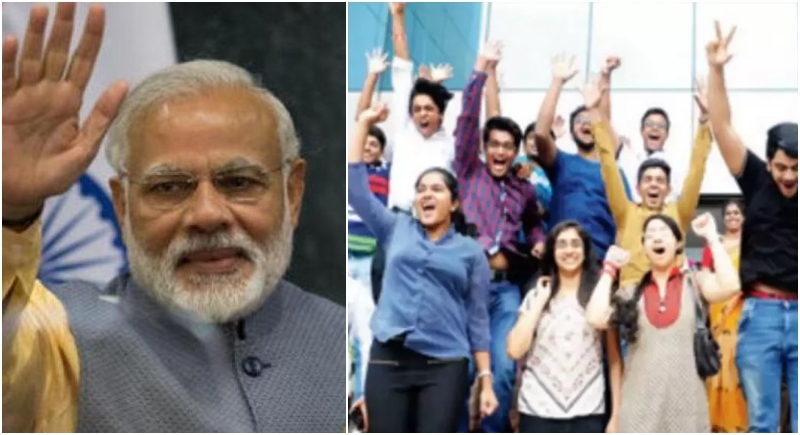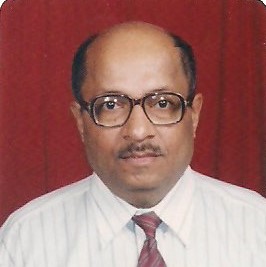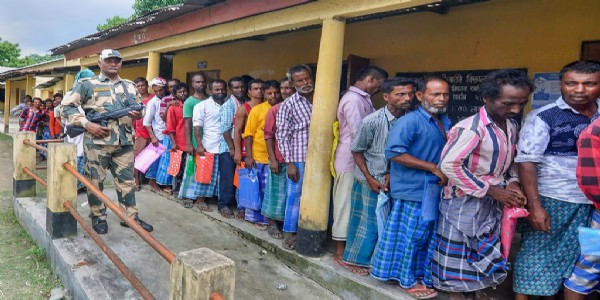Reservations for unreserved class: A Masterstroke on a marshy turf in Indian Politics
A
sensitive, inevitable and a complex issue: Reservation in India:
“The system of reservation in India consists of a series of measures, such as reserving access to seats in the various legislatures, to government jobs, and to enrolment in higher educational institutions. The reservation nourishes the historically disadvantaged castes and tribes, listed as Scheduled Castes and Scheduled tribes (SCs and STs) by the Government of India and also those designated as Other Backwards Classes (OBCs). The reservation is undertaken to address the historic oppression, inequality and discrimination faced by those communities and to give these communities a place. It is intended to realise the promise of equality enshrined in the Constitution.

The Constitution prohibits untouchability and obligates the state to make special provision for the betterment of the SCs and STs. Over the years, the categories for affirmative action, also known as positive discrimination, have been expanded beyond those to the OBCs.
Reservation is governed by the Constitution, statutory laws and local rules and regulations. The SCs, STs and OBCs, and in some states Backward Classes among Muslims under a category called BC(M), are the primary beneficiaries of the reservation policies. There have been protests from groups outside the system who feel that it is inequitable.
( Source: Caste and community profile of people below the poverty line in India, as outlined in the Sachar Report. )
Caste
According to the Dharma Shastras in Hinduism, the society can be divided into four categories based on the birth and occupation of the family, a person is born into.
Brahmins Kshatriyas Vaishyas Sudras Caste Based reservation - Background in India In central-government funded higher education institutions, 22.5% of available seats are reserved for Scheduled Caste (SC) and Scheduled Tribe (ST) students (7.5% for STs, 15% for SCs).[23] This reservation percentage has been raised to 49.5%[23] by including an additional 27% reservation for OBCs. This ratio is followed even in Parliament and all elections where a few constituencies are earmarked for those from certain communities (which will next rotate in 2026 per the Delimitation Commission).
The exact percentages vary from state to state:
1. In
Haryana, the reservation is 20% for SCs, 16% for backward class A, 11% for
backward class B, 10% special backward class, 10% economically backward in open
caste and 3% for physically handicapped (70% total), based on local
demographics.
2. In Tamil Nadu, the reservation is 18% for SCs, 1% for STs, 20% BC and 30%MBC (69% total) based on local demographics.
3. In Jharkhand, the reservation is 11% for SCs, 27% for STs and 22% OBC (60% total) based on local demographics.
4. In Maharashtra, the reservation is 13% for SCs and 7% for STs, 32% OBC, Maratha Caste 16% (68% total) based on local demographics.
5. In Karnataka, the reservation is 15% for SCs and 3% for STs, 32% OBC (50% total) based on local demographics.
6. In Kerala, the reservation is 8% for SCs and 2% for STs, 40% OBC (50% total) based on local demographics.
7. In Uttar Pradesh, the reservation is 21% for SCs and 2% for STs, 27% OBC (50% total) based on local demographics.
8. In Bihar, the reservation is 15% for SCs and 1% for STs, 34% OBC (50% total) based on local demographics.
9. In Madhya Pradesh, the reservation is 16% for SCs and 20% for STs, 14% OBC (50% total) based on local demographics.
10. In Rajasthan, the reservation is 16% for SCs and 12% for STs, 26% OBC (54% total) based on local demographics.
11. In Northeast India, especially in Arunachal Pradesh, Meghalaya, Nagaland and Mizoram, reservation for ST in State Govt. jobs is 80% with only 20% unreserved. In the Central Universities of NEHU(shillong) and Rajiv Gandhi University, 60% of seats are reserved for ST students.
12. In Andhra Pradesh, 29% of educational institutes and government jobs are reserved for OBCs, 33.33% for women, 15% for SCs, 6% for STs.
13. In West Bengal, 35% of educational institute seats and government jobs are reserved for SC, ST, and OBC (22% SC, 6% ST, 7% for[26 OBC A & B. In West Bengal there is no reservation on religious basis but some economically and educationally backward Muslim castes (basis surnames pertaining to different profession e.g. cobbler, weaver etc.) have been included along with their Hindu counterparts in OBC list namely OBC A and OBC B, in both lists caste from both communities are there. But in higher educational institutes, till now there is no reservation for the OBC community but there is reservation in regard to admission in primary, secondary and higher secondary studies.”
( Source: Wikipedia )
Politics of social justice: Need of the hour
Political repercussions of the land mark decision of the MODI Government:
Modi government on Monday approved 10 per cent reservation for economically weaker people among general category in government jobs and educational institutions. The 10 per cent reservation is, however, not only meant for 'upper caste' or just Hindus. The approved quota is intended for all those communities/classes that do not come under 50 per cent quota. It will be for all communities - for the economically backwards among Hindus, Muslims, Christians etc. This will not affect the reservation for SCs, STs and OBCs.
To implement the decision, the NDA government will require pushing for a Constitutional amendment to increase the limit of quota from a maximum of 50% to 60%. "The reservation will be given to those economically backward poor people who are not availing the benefit of reservation as of now," a source explained to PTI. The reservation benefit is likely to be availed by those whose annual income is below Rs 8 lakh and have up to five acres of land, he said.
Articles 15 and 16 of the Constitution will have to be amended for implementation of the decision, the sources added.
The hypocrites exposed:
It will be interesting to see as what would be the future strategy of all those “social justice icons” who have been clamouring for a berth in the reserved or at least OBC category in the reservation ladder and by snatching away the “cake”, depriving the genuine needy poor ?
The self styled and self proclaimed champions of the labouring, downtrodden and farming communities will find it very hard to digest the blow and their faces as well.
Socialising the political process:
The Prime Minister Narendrabhai Modi is trying to socialise the socio-political process by issuing bitter pills of social justice for the pseudo-secularists and the hypocrite icons of several sorts.






